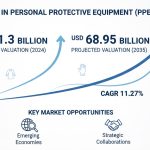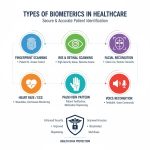Introduction
Hemodialysis and peritoneal dialysis have been a rapidly growing market over the past decade due to the rise in cases of chronic kidney diseases (CKD), increasing aged population and the progresses made in technology. Consequently, the global need for efficient renal care solutions is pushed higher with increasing rates of both diabetes and hypertension, which are leading factors in CKD.
Understanding Hemodialysis and Peritoneal Dialysis
Hemodialysis
Hemodialysis is a medical procedure where a dialysis machine and a special filter, known as an artificial kidney, are used to remove waste products, toxins, and excess fluids from the blood. Typically performed in clinics or hospitals, this method is ideal for patients with end-stage renal disease (ESRD) who require long-term treatment.
Peritoneal Dialysis
Peritoneal dialysis, on the other hand, utilizes the patient’s peritoneum in the abdomen as a natural filter. A cleansing fluid is introduced into the abdominal cavity through a catheter, absorbing waste and fluids, and then drained out. This method offers more flexibility and can be performed at home, making it a viable alternative for many patients.
Our comprehensive Hemodialysis and Peritoneal Dialysis Market report ready with the latest trends, growth opportunities, and strategic analysis- View Sample Report PDF

Key Growth Drivers in the Dialysis Market
Rising Prevalence of CKD and ESRD
The global burden of CKD is on the rise, with an estimated 10% of the world’s population affected by some form of kidney disease. Factors such as unhealthy lifestyles, obesity, and increased life expectancy are contributing to the growing incidence. As CKD progresses, many patients develop ESRD, necessitating dialysis or kidney transplantation.
Technological Advancements
Innovations in dialysis equipment and procedures are making treatment more efficient and patient-friendly. Key advancements include:
- Portable hemodialysis machines.
- Automated peritoneal dialysis (APD) systems.
- Wearable dialysis devices.
- Improved dialyzers with better biocompatibility and performance.
Government Initiatives and Reimbursement Policies
Governments worldwide are implementing initiatives to improve access to renal care. Favorable reimbursement policies in developed countries have played a crucial role in expanding the patient pool receiving treatment. For instance, Medicare in the U.S. covers a significant portion of dialysis costs for ESRD patients.
Growing Demand for Home Dialysis
The convenience and flexibility of home dialysis solutions, particularly peritoneal dialysis, are driving their adoption. With the COVID-19 pandemic emphasizing the importance of at-home treatments, this segment is expected to witness sustained growth.
Increasing Investments in Healthcare Infrastructure
Emerging economies are investing heavily in healthcare infrastructure, including dialysis centers. This is expected to bridge the gap in access to dialysis care, particularly in rural and underserved areas.
Regional Insights
North America
North America dominates the global dialysis market, driven by:
- High prevalence of CKD and diabetes.
- Advanced healthcare infrastructure.
- Strong presence of key market players like Baxter International and Fresenius Medical Care.
- Government-funded healthcare programs such as Medicare and Medicaid.
Key Statistics
- The U.S. accounts for the largest share in the region due to its extensive network of dialysis centers.
- Technological adoption is at its peak, with significant investments in R&D.
Europe
Europe is the second-largest market, characterized by:
- Increasing adoption of home dialysis solutions.
- Supportive government policies and funding for renal care.
- Strong focus on patient education and awareness.
Regional Trends
- Countries like Germany, France, and the UK are leading in the adoption of advanced dialysis technologies.
- Growing investments in telemedicine for remote patient monitoring.
Asia-Pacific
The Asia-Pacific region is experiencing rapid growth due to:
- A large and aging population.
- Rising prevalence of CKD and diabetes.
- Expanding healthcare infrastructure in countries like China and India.
- Increased government spending on healthcare.
Emerging Markets
- China is witnessing significant growth due to government initiatives promoting domestic manufacturing of dialysis equipment.
- India’s National Dialysis Program is improving access to treatment for underserved populations.
Latin America
Latin America shows promising growth potential owing to:
- Rising healthcare awareness and access.
- Increasing prevalence of lifestyle diseases contributing to CKD.
- Regional collaborations to improve healthcare delivery.
Market Insights
- Brazil and Mexico are key contributors, with expanding dialysis center networks.
- Public-private partnerships are driving investments in renal care.
Middle East and Africa
While still developing, the Middle East and Africa (MEA) region presents significant opportunities due to:
- Growing investments in healthcare infrastructure.
- Increasing awareness about CKD and its treatment options.
- Support from international organizations to address healthcare disparities.
Regional Dynamics
- The UAE and Saudi Arabia are leading the region in dialysis adoption.
- Africa faces challenges like limited access to care, but international collaborations are addressing these gaps.
Emerging Trends in the Dialysis Market
Telemedicine Integration
Telemedicine is transforming patient care by enabling remote consultations, monitoring, and follow-ups, particularly beneficial for home dialysis patients.
Wearable Dialysis Devices
Wearable devices are paving the way for more mobile and convenient dialysis solutions, improving patient quality of life.
AI and Machine Learning
Artificial intelligence (AI) and machine learning are being utilized to predict patient outcomes, personalize treatment plans, and optimize dialysis processes.
Sustainable Solutions
Eco-friendly dialysis systems are gaining attention, focusing on reducing water consumption and waste generation.
Focus on Personalized Medicine
Personalized medicine approaches are being integrated into dialysis care, tailoring treatments based on genetic and lifestyle factors.
Challenges and Opportunities
Challenges
- High costs associated with dialysis equipment and treatments.
- Limited access to dialysis care in low-income regions.
- Shortage of trained healthcare professionals.
Opportunities
- Expansion into emerging markets with increasing healthcare investments.
- Development of cost-effective and portable dialysis solutions.
- Collaborative efforts to enhance patient education and awareness.
Future Outlook
The global hemodialysis and peritoneal dialysis market is projected to offer a CAGR of higher than 6.4% in the years from 2024 to 2034. These are technology, growth in health care expenditure and an emphasis on patient-centered care. Therefore, market conditions remain largely regionalized, and the major opportunities will remain in the Asia-Pacific, Latin America, and African markets.
For Hemodialysis and Peritoneal Dialysis Market Report and updates detailed: View Full Report Now!
Conclusion
Currently, the hemodialysis and peritoneal dialysis market is most instrumental in responding to the global problem of CKD and ESRD. The future market outlook is also bright owing to the higher rate of technological advancement and better governmental support plus improving awareness. NACCAP sub-regional analysis highlights the strengths and ‘hot spots’, stressing the importance of partnerships to address the disparities in dialysis service. Thus, the role of the industry today will be to contribute to advanced performance that results in better patient experiences as well as making millions of lives richer across the globe.
See the comprehensive Hemodialysis and Peritoneal Dialysis Market research by Vantage Market Research for a thorough examination of market projections, major players, and geographical trends.
![[Market Research Reports] – Research Google News Blog | VMR.Biz](https://www.vmr.biz/wp-content/uploads/2022/12/logo-removebg-preview.png)











